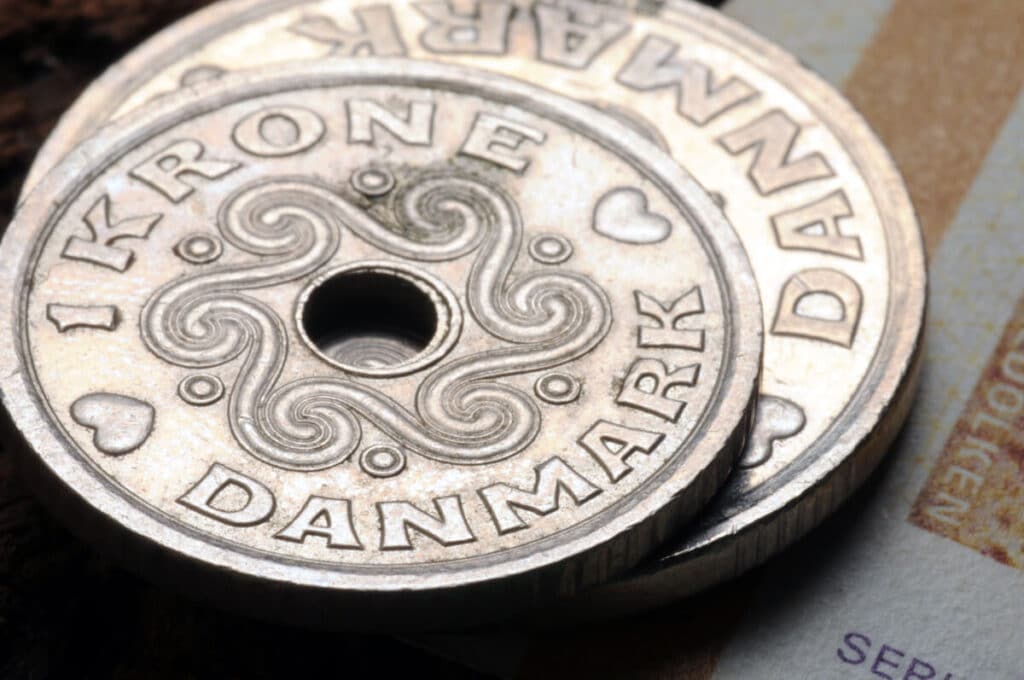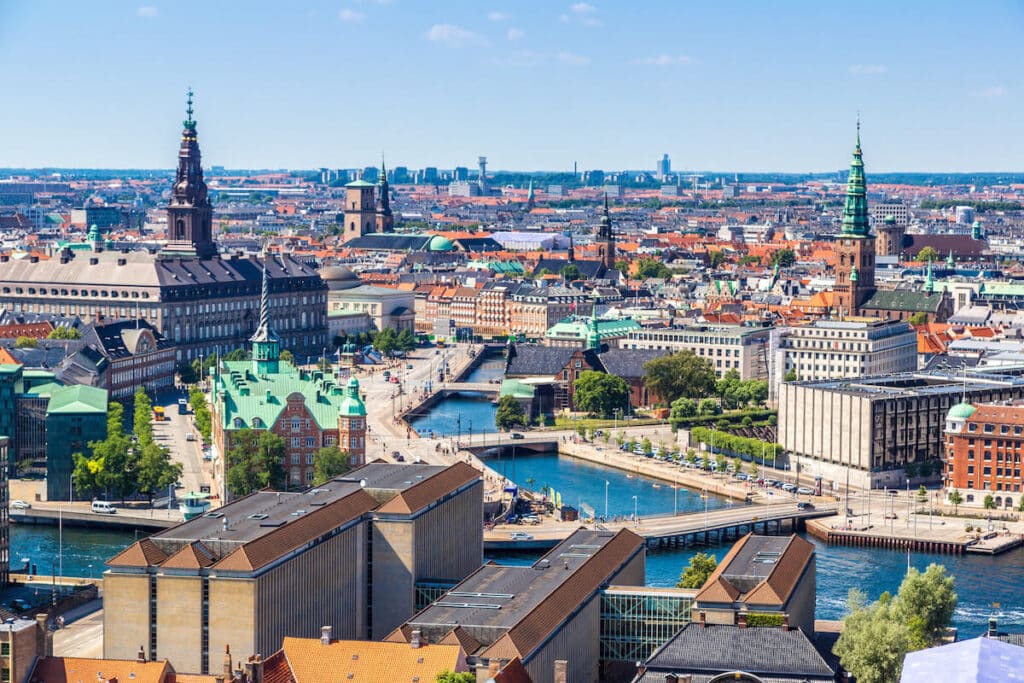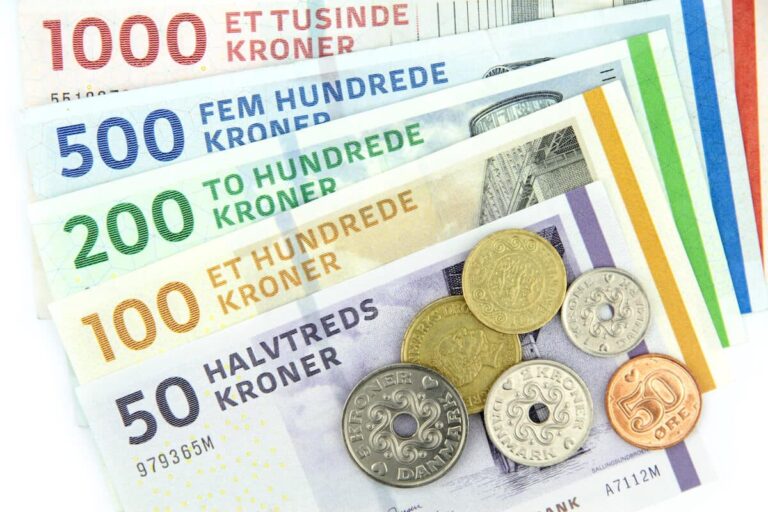Like Denmark itself, Danish currency has a rich history dating back centuries. It wasn’t until the 19th century, though, that the modern Danish krone (plural: Danish kroner) developed. Today, the official currency of Denmark maintains a strong reputation in the global economy. How much do you know about the krone?
It never hurts to know more about a country’s money, whether you live, travel, or work there to support family back home. Get to know Danish currency from its history and usage to its appearance.
A look at the modern Danish krone
The Danish krone (currency code DKK) is the currency of the kingdom of Denmark. It’s available in several banknote denominations.
Krone banknotes
- 50
- 100
- 500
- 1,000
Krone coins
- 1
- 2
- 5
- 10
- 20
Also, just as a U.S. dollar (1 USD) is divided into 100 cents, the Danish krone is divided into 100 øre. The smallest coin in Denmark is worth 50 øre.
The history of the Danish krone

The minting of Danish coins goes back to the middle ages, with its first silver coins produced before 1000 A.D. The first Danish currency called the krone (meaning “crown”) dates back to the 1500s. Back then, the krone was not the principal currency in Denmark. It was most often valued against the more popular Danish Rigsdaler Courant.
It wasn’t until the late 19th century that the krone took center stage. Along with Norway and Sweden, Denmark entered the Scandinavian Currency Union. This agreement resulted in all three countries moving to the gold standard and establishing their currency as the krone (known as the krona in Sweden).
Once the government adopted this new currency, krone banknotes also came into more common use as they were more convenient than coins, which could often be heavy in large quantities. Given the increased amount of international trade by Denmark, this turned out to be a wise move for the country’s economic growth.
The Scandinavian Currency Union ended in 1914. Afterwards, Denmark experimented with the gold standard and tied its currency to Germany’s, particularly during the German occupation of Denmark during World War II. That arrangement ended with the war, leaving the currency in its modern form more or less.
5 fascinating facts about the Danish krone

1. Denmark isn’t the only country to have currency with that name.
As mentioned above, the late 19th and early 20th centuries saw the rise of the Scandinavian Currency Union, which for a time linked the currencies of Denmark, Sweden, and Norway. Though that Union ended in 1914, each of those countries still maintains the currency names that came about from the union.
Thus, if you go to Norway, you will still be using krone as the currency. However, there’s not typically a one-to-one exchange rate between Norwegian krone (NOK) and Danish krone (DKK). The same is true for the Swedish krona (SEK).
2. The Danish krone is used outside of Denmark.
The Kingdom of Denmark extends beyond the borders of the European country. Greenland was a colony of Denmark until 1953, when it was designated a district of Denmark. It has both its own government and representatives in the Danish Parliament, known as the Folketing. While Greenland does issue its own banknotes, the Danish krone is its official currency.
The Faroe Islands are a separate country in the North Atlantic that is contained within the Kingdom of Denmark. Though the islands technically have their own currency, the Faroese króna, it is pegged to the Danish krone, so the exchange rate is always one to one.
3. Denmark hasn’t yet adopted the Euro.
The euro (EUR) has been widely adopted as a common currency throughout the European Union. Denmark, however, specifically opted out of using the Euro when joining the EU. It is among the eight member states that still use their own currencies.
4. Most of the time, bigger and thicker Danish coins have more value.
Danish coins vary in color, diameter, and thickness. Generally speaking, the bigger and thicker a coin is, the more it’s worth. Values range from the 21.5-millimeter long, 1.5-millimeter thick 50-øre coin to the 27-millimeter-long, 2.35-millimeter-thick 20-krone coin.
While a couple of higher-value coins might have slightly smaller diameters than you would expect, more valuable coins are always thicker.
Also, the coins have different colors to indicate higher value. Copper-colored coins have the least value, and bronze-colored coins have the most.
5. Modern Danish krone banknotes are colorful and feature a lot of bridges.
Like the other currencies around the world, Danish money has historically featured popular national figures. In 2009, though, Denmark’s Central Bank issued a series of banknotes featuring Danish bridges and the surrounding landscapes on the 50, 100, 200, 500, and 1,000 krone banknote denominations.
The notes are printed on strong cotton paper with a variety of colors (violet, orange-yellow, green, blue and red) and have embossed print to assist visually impaired people in using the currency.
Understanding Danish krone exchange rates
Whether you’re sending money to or from Denmark, it’s helpful to understand the exchange rate between the Danish krone and the currency you want to exchange for it.
A quick search with an online currency converter will help you determine the real-time exchange rate between Danish krone (DKK) and any other currency you can think of (such as USD or GBP). A money transfer app like Remitly will also show you the current rate for DKK.
